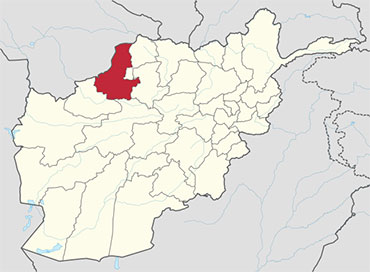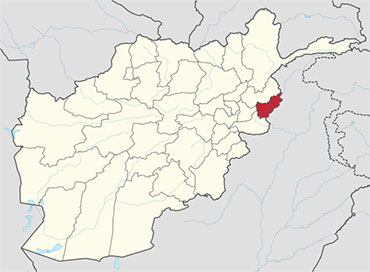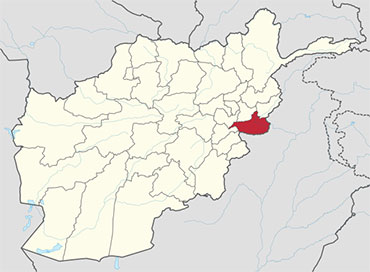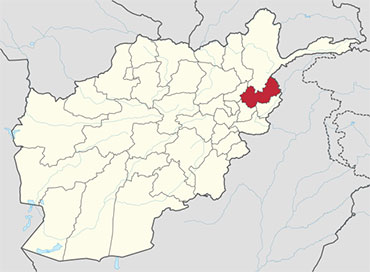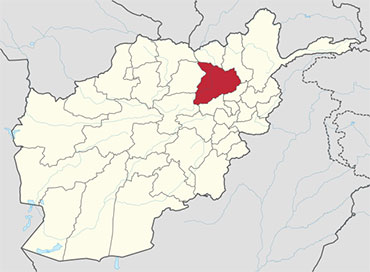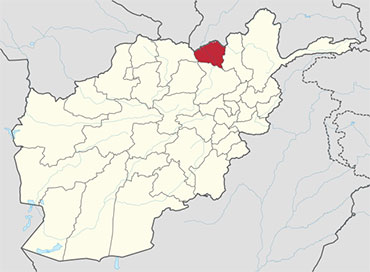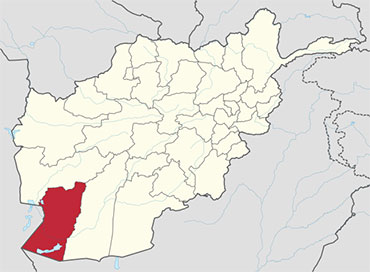 Nimruz is one of the 34 provinces of Afghanistan, located in the southwestern part of the country. It lays to the east of the Sistan and Baluchestan Province of Iran and north of Balochistan, Pakistan. The province contains five districts, encompassing about 649 villages, and roughly 156,600 settled people. The city of Zaranj serves as the provincial capital and Zaranj Airport, which is located by that city, serves as a domestic airport for the province.
Nimruz is one of the 34 provinces of Afghanistan, located in the southwestern part of the country. It lays to the east of the Sistan and Baluchestan Province of Iran and north of Balochistan, Pakistan. The province contains five districts, encompassing about 649 villages, and roughly 156,600 settled people. The city of Zaranj serves as the provincial capital and Zaranj Airport, which is located by that city, serves as a domestic airport for the province.
The name Nimruz means “mid-day” or “half-day” in Persian and Pashto. The name is believed to indicate that the meridian cutting the old world in half passes through this region. Nimruz covers 41,000 km². It is the most sparsely populated province in the country, located in the Sistan Basin. A substantial part of the province is the desert area of Dashti Margo.
History
The area now composing Nimruz province of Afghanistan was once part of the historical region of Sistan, which over the many centuries was held by the Achaemenid Empire, Alexander the Great and others before being conquered and converted to Islam by the Muslim Arabs in the 7th century. The region became part of the Saffarid dynasty in 860 CE with its capital at Zaranj, which was one of the first local dynasties of the Islamic era. Its founder Yaqub Saffari was born and raised in this region. The territory became part of the Ghaznavids followed by the Ghurids, Timurids, and Safavids.
In the early 18th century, the region fell to the Afghan Hotaki dynasty until they were removed from power in 1738 by Nader Shah. By 1747, Ahmad Shah Durrani made it part of Afghanistan after he conquered the territory from northeastern Iran to Delhi in India. Under the modern Afghan governments, the province was known as Chakhansur Province until 1968, when it was separated to form the provinces of Nimruz and Farah. The city of Zaranj became the capital of Nimroz province at that time. During the Soviet war in Afghanistan, Nimruz province was used by mujahideen crossing back and forth between Afghanistan and neighboring countries. It was also used by Afghan refugees escaping the war as well as by smugglers.
As the Taliban came to power in 1995, they seized the road-controlling town of Delaram (now within Farah Province), and came to an agreement with the mujahideen warlords holding Nimroz that the fate of the province would not be decided until a clear victor emerged in the capture of Kabul. However, the Taliban advanced on Nimruz only days later, and the mujahideen under command of Abdul Karim Brahui fled to Iran.
Healthcare
The percentage of households with clean drinking water fell from 38% in 2005 to 24% in 2011. The percentage of births attended to by a skilled birth attendant increased from 7% in 2005 to 28% in 2011.
Economy
As of June 2014 Zaranj Airport which is located near the city of Zaranj had regularly scheduled flights to Herat.
The Delaram–Zaranj Highway has been constructed by India via Chaknasur, which is expected to boost the socio economic development in the region.
Trade and farming is the main source of income for the majority. This includes agriculture and animal husbandry. Animals include sheep, goat, cattle, and poultry. The province produces the following: Wheat, corn, melons, poppies; almost all irrigated.
Demography
The population of Nimruz Province is approximately 156,600 settled people. There are also many Kuchi nomads who inhabit the province seasonally. The Baloch ethnic group form majority in the province followed by Pashtun, Brahui, Tajik, Uzbek, and Hazara. The Pashtun tribes are mostly Barakzai and Nurzai. Almost all inhabitants except Hazaras follow Sunni Islam.] Languages spoken in the province are Pashto, Dari, and Balochi, which is spoken by the Baloch tribes as their mother tongue.
Districts
Nimruz province is divided into about 5 districts.
| District | Population | Area |
|---|---|---|
| Chahar Burjak | 8,080 | |
| Chakhansur | 11,165 | |
| Kang | 13,514 | |
| Khash Rod | 35,381 | |
| Zaranj | 49,851 |
